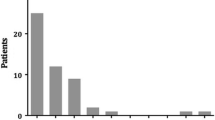Background: Endoscopic retrograde cholangiopancreatography (ERCP) is increasingly being performed for therapeutic purposes. This report reviews our experience in an attempt to determine the role and efficacy of ERCP in the management of postoperative complications following surgery for gallstones. Methods: This study analyzes ERCP records of 418 patients performed in a single referral center after a surgery for gallstones, in the period from December 1991 to June 2000. Results: A total of 451 endoscopic procedures were performed for 418 patients. The primary operations which required ERCP and were included in the study were laparoscopic cholecystectomy (n = 161, 38.5%), choledocholithotomy and T-tube drainage (n = 157, 37.5%), open cholecystectomy (n = 82, 19.6%), choledochoduodenostomy (n = 14, 3.3%), and cholecystostomy (n = 4, 1%). Procedure was carried out successfully in 403 patients (96.4%), whereas a proper endoscopic diagnosis was not achieved in 15 (3.5%). Retained biliary stones (without any associated abnormality) were found in 163 (38.9%), ductal injuries in 44 (10.5%), biliary strictures in 21 (5.0%), papillary stenosis in 36 (8.6%), cystic stump leak (with or without retained stones) in 30 (7.1%), leak from T-tube tract (with/or without retained stones) in 20 (4.8%), and unsuspected malignancies in 18 (4.3%). A sole diagnostic cholangiography was obtained in 63 patients (15.0%). Patients were managed by debris or stone extraction in 169 (40.4%), endoscopic sphincterotomy (ES) in 145 patients (34.6%), stent insertion in 19 (4.5%), or dilatation in 2 (0.4%). Overall successful stone removal rate was 97.4%. Thirty-nine patients with normal cholangiographic findings underwent ES for the relief of presenting signs and symptoms. ERCP-related morbidity was 13.6%. Conclusions: The need for ERCP is rising, especially for stones retained after cholecystectomies. Endoscopy offers safe and effective methods in the treatment of bile leaks, unless associated with major ductal injuries. ES is a reasonable method for treating papillary stenosis and some post-cholecystectomy pain or symptoms.
Similar content being viewed by others
Author information
Authors and Affiliations
Rights and permissions
About this article
Cite this article
Yamaner, S., Bilsel, Y., Bulut, T. et al. Endoscopic diagnosis and management of complications following surgery for gallstones . Surg Endosc 16, 1685–1690 (2002). https://doi.org/10.1007/s00464-002-9048-7
Received:
Accepted:
Issue Date:
DOI: https://doi.org/10.1007/s00464-002-9048-7




